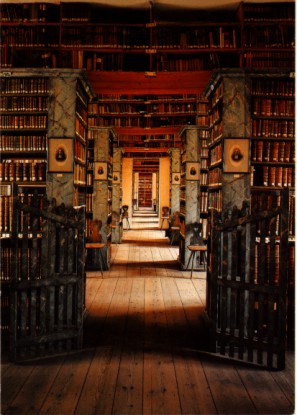| Renewal movement
within seventeenth- and eighteenth-century Lutheranism and a seedbed
of modern Protestant missions. |
 |
|
Library
at the University of Halle, center of Pietism
|
Germany and other
areas of Europe were devastated by the Thirty
Years' War; some considered state churches to be cold and formal;
scholastic theology did not nurture most Christians. Responding to these
conditions, Pietism prized the conversion experience, and encouraged holy
living--active compassion and Christian witness. Philip Jacob Spener's
1675 publication of Pia Desideria marks the emergence of the movement.
But Pietism had had older roots, for example in Martin
Luther, whose legacy Spener sought to carry forward through renewal
and reform, and in John
Huss the forerunner of the Moravians. The University of Halle, founded
in Germany in 1694, became a training ground for Pietist leaders. There
August Francke (1663-1727) developed an orphanage, a school for poor children,
and a Bible Institute. Francke's goals were "a life changed, a church
revived, a nation reformed, and a world evangelized." From Halle, missionaries
such as Ziegenbalg and Plütschau
were sent around the world. Pietists were often in conflict with state
churches; in some times and places it was illegal for pietists to preach
without a license or to hold small group meetings. The Norwegian lay-preacher
Hans Nielsen Hauge suffered imprisonment
for his activities. Related movements existed among Reformed, Moravian,
and Radical Protestants; Pietism also had ties to Puritanism
and Methodism. Still practiced today are several methods
cultivated by Pietism: small group ministries, Bible studies, evangelism,
and lay leadership.
|